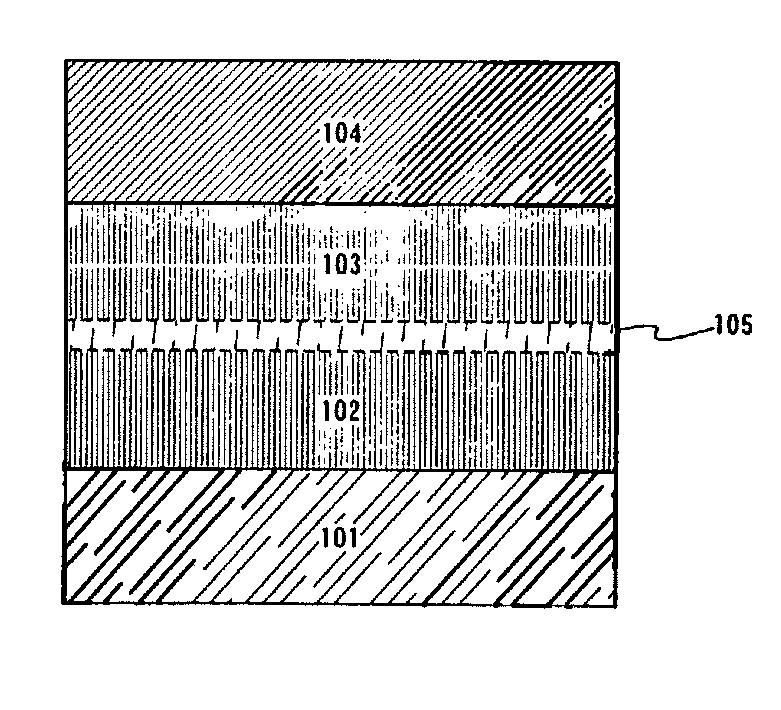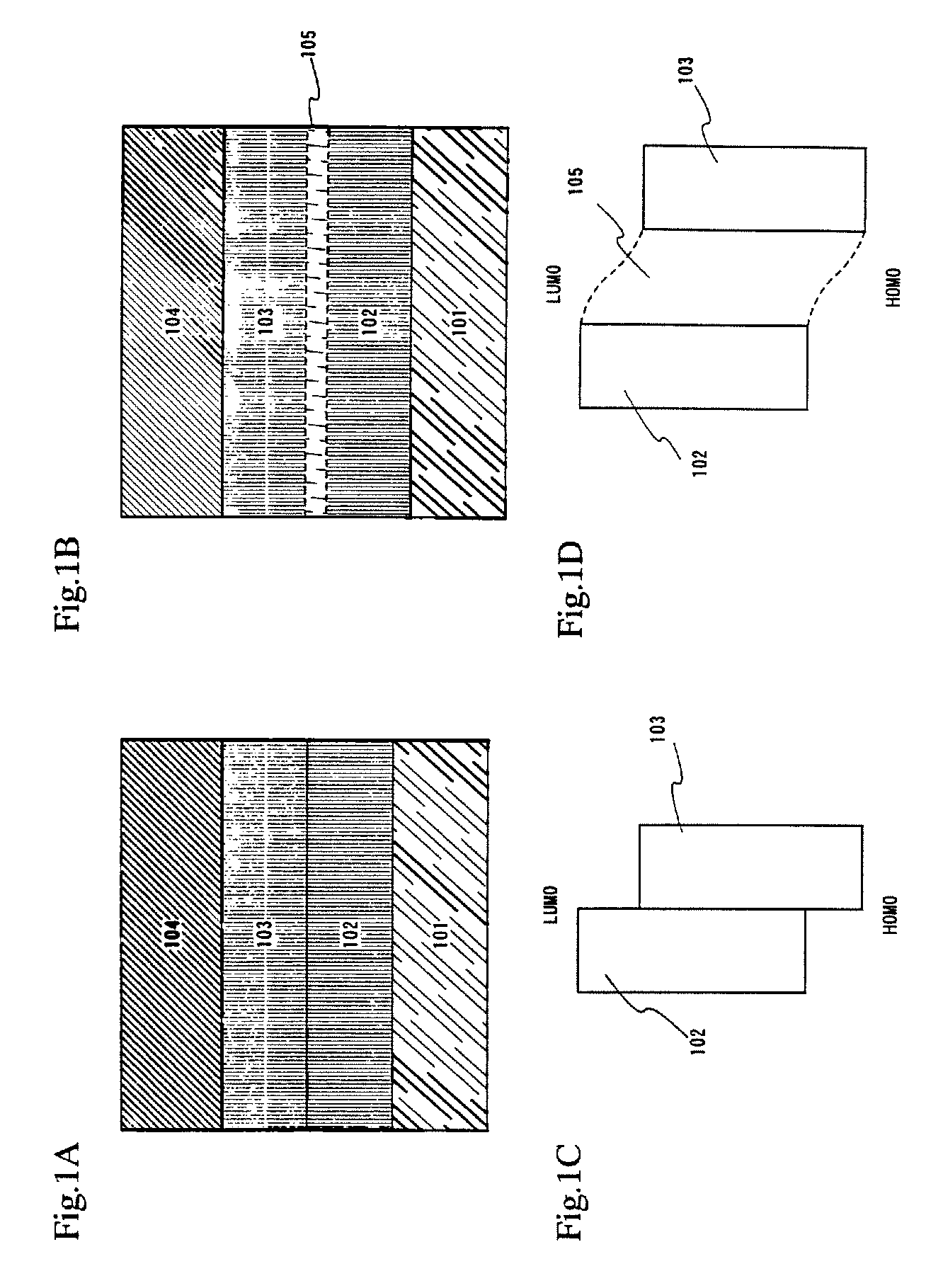Light emitting device and method of manufacturing the same
a technology of light-emitting devices and light-emitting screens, which is applied in the direction of luminescent screen devices, discharge tubes, instruments, etc., can solve the problems of difficult control of evaporation amount and small amount of pigment used in doping
- Summary
- Abstract
- Description
- Claims
- Application Information
AI Technical Summary
Benefits of technology
Problems solved by technology
Method used
Image
Examples
embodiment mode 1
[0134]Embodiment Mode 1 describes a case of forming mixed layers at interfaces of organic compound layers with a light emitting layer in an organic light emitting element that has an organic compound layer 403 between an anode 401 and a cathode 402 as shown in FIG. 4.
[0135]In this embodiment mode, the organic compound layer 403 has a laminate structure of a plurality of organic compound layers. Specifically, a hole injecting layer 404 for improving injection of holes from the anode is formed on the anode 401, and a hole transporting layer 405 for improving transportation of the injected holes is formed on the hole injection layer 404.
[0136]A mixed layer (1) 407 is formed by coevaporation using the material that constitutes the hole transporting layer 405 and the material that constitutes a light emitting layer 406. The coevaporation is carried out in the manner described above. At this point, the mixed layer (1) 407 may have concentration gradient.
[0137]By providing the mixed layer ...
embodiment mode 2
[0142]Embodiment Mode 2 gives a description on a case of manufacturing an organic light emitting element with an element structure different from the one shown in Embodiment Mode 1.
[0143]The description given in Embodiment Mode 2 is a case in which mixed layers are formed at interfaces of organic compound layer with a laminate structure when an organic light emitting element is a triplet light emission element.
[0144]In Embodiment Mode 2, a laminate organic compound layer 503 with a plurality of organic compound layers is formed between an anode 501 and a cathode 502 as shown in FIG. 5. Specifically, a hole injection layer 504 for improving injection of holes from the anode 501 is formed on the anode 501, and a hole transporting layer 505 for improving transportation of the injected holes is formed on the hole injection layer 504.
[0145]A mixed layer (1) 507 is formed by coevaporation using the material that constitutes the hole transporting layer 505 and the material that constitutes...
embodiment mode 3
[0153]Embodiment Mode 3 gives a description with reference to FIG. 6 in a case of manufacturing an organic light emitting element with an element structure different from the one shown in Embodiment Mode 1 or Embodiment Mode 2.
[0154]The description given in Embodiment Mode 3 is a case in which an organic light emitting element has an organic compound layer 603 between an anode 601 and a cathode 602 and mixed layers are formed at interfaces between injecting layers and transporting layers in the organic compound layer.
[0155]In Embodiment Mode 3, the organic compound layer 603 has a structure in which a plurality of organic compound layers are laminated. Specifically, a hole injecting layer 604 for improving injection of holes from the anode 601 is formed on the anode 601.
[0156]In this embodiment mode, a mixed layer (1) 606 is formed here by coevaporation using the material that constitutes the hole injection layer 604 and the material that constitutes a hole transporting layer 605. T...
PUM
 Login to View More
Login to View More Abstract
Description
Claims
Application Information
 Login to View More
Login to View More - R&D
- Intellectual Property
- Life Sciences
- Materials
- Tech Scout
- Unparalleled Data Quality
- Higher Quality Content
- 60% Fewer Hallucinations
Browse by: Latest US Patents, China's latest patents, Technical Efficacy Thesaurus, Application Domain, Technology Topic, Popular Technical Reports.
© 2025 PatSnap. All rights reserved.Legal|Privacy policy|Modern Slavery Act Transparency Statement|Sitemap|About US| Contact US: help@patsnap.com



